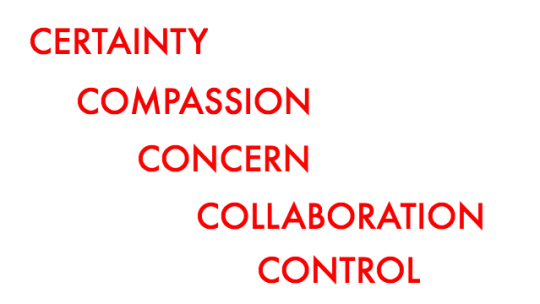
When a severe crisis strikes, it can induce panic. As a human instinct, panic can be a useful evolutionary response to immediate danger, but it is not particularly helpful when you're trying to draft a response that will protect a brand's reputation.
This is where a solid framework comes into play. It can make sure you've touched on all the major areas you need to communicate and that you haven't overlooked something major.
In the PR News Book of Crisis Management Strategies & Tactics, vol. 9, Jeff Leshay, president of Leshay Communications, explains how he uses five words—certainty, compassion, concern, collaboration and control—to remember what a crisis response statement should convey. When the goal is to demonstrate responsibility and leadership, these "5 C's" can cover all your bases for a reassuring and competent response. Excerpted below is an example of how Leshay would put them into action in a statement responding to a hypothetical scenario:
Putting the 5 Cs into Play: Drafting an Initial Response to a Shooting Incident
Certainty
Today at [approximate time of day], an unidentified man with a gun entered [name or type of property/operations] and began firing. We can confirm there have been injuries, but we do not yet know the number of people wounded nor the extent of those wounds. At least [four people] have been transported to [name(s) of local hospital(s)], and with the help of [local law enforcement authorities], we have evacuated/secured/closed [name or type of property/operations].
Compassion
Our hearts/thoughts/prayers go out to those impacted by this tragedy, and we’ll be bringing in [counselors/others] to help [employees/customers/partners/students/faculty/communities] deal with any difficulties stemming from what they may have experienced today.
Concern
Nothing is more important to [us/name of organization] than the safety and well-being of our [employees/customers/partners/students/faculty/communities]. As soon as we learned of the incident, we notified [law enforcement and medical emergency officials] and enacted the crisis protocol we have in place [and practice regularly] to contain the situation.
Collaboration
We are working closely with [authorities/emergency officials/investigators] on the scene to determine exactly what happened. We’re providing them with access to any/all resources they may need in their investigation.
Control
We’re thankful to [local law enforcement and medical emergency authorities], who’ve helped us evacuate/secure/close [name or type of property/operations] pending [the completion of the investigation/any further announcements]. We will continue to closely monitor the situation and take whatever steps necessary in the future to ensure the safety of our [employees/customers/partners/students/faculty/communities].
Follow Ian on Twitter: @ianwright0101
